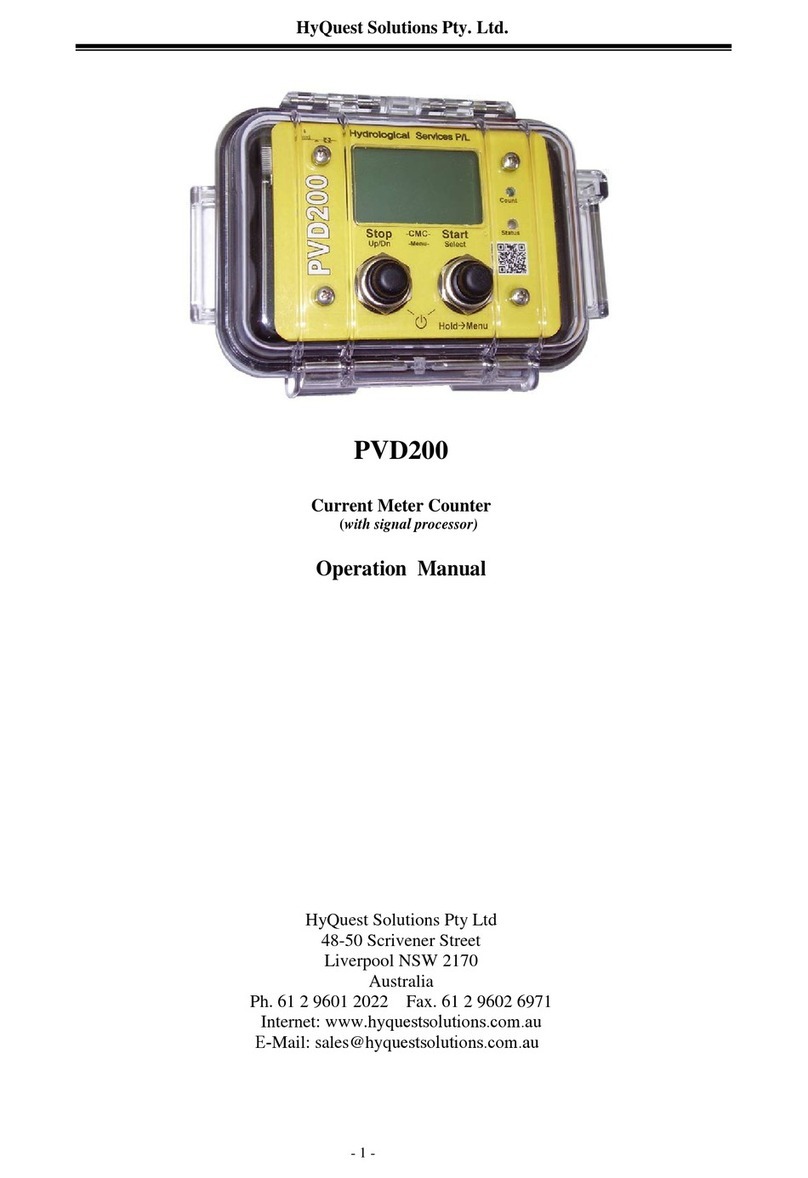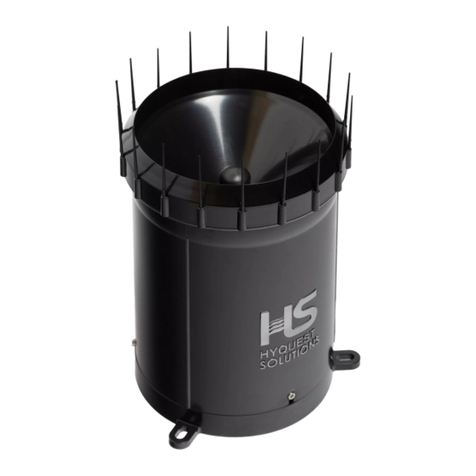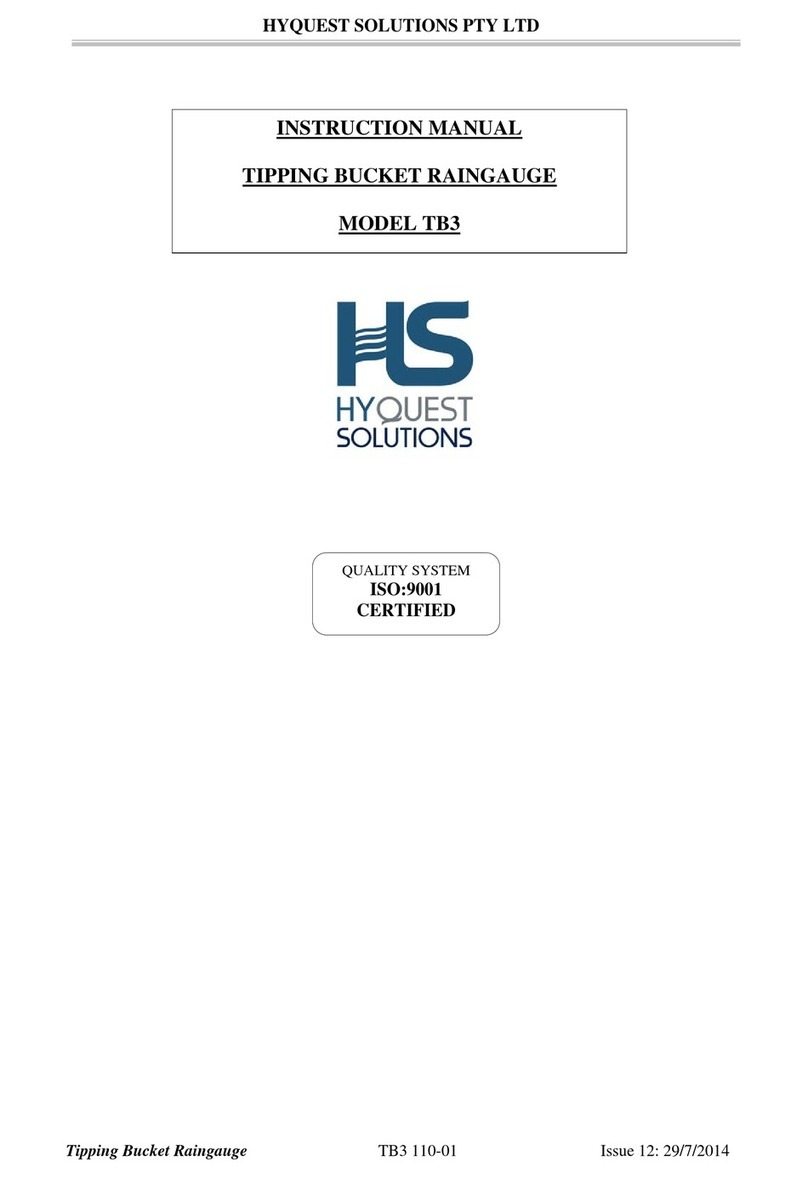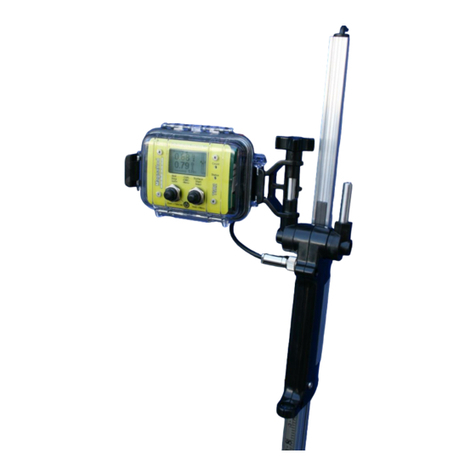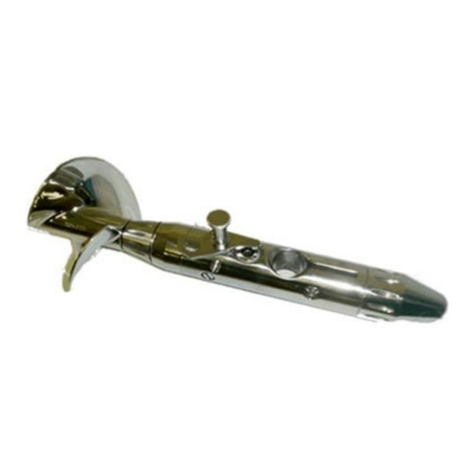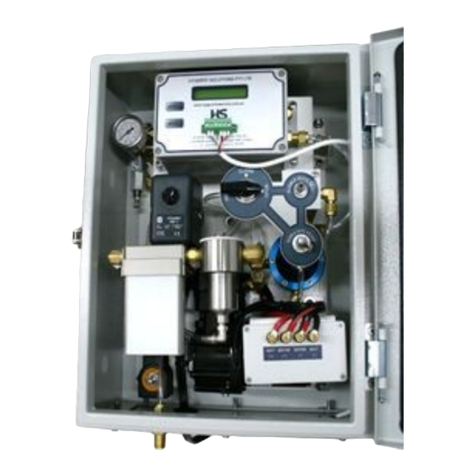If you encounter problems understanding the information in the manual (or part thereof), please con-
sult the manufacturer or its appointed reseller for further support. HyQuest Solutions HyQual is in-
tended to be used in hydrometeorological or environmental monitoring applications.
Before starting to work, you have to check the functioning and integrity of the system.
Check for visible defects on the HyQual probe multi-probe, this may or may not include any or all of the
following: mounting facilities, connectors and connections, mechanical parts, internal or external com-
munication devices, power supplies or power supply lines, etc.
If defects are found that jeopardize the operational safety, work must be stopped. This applies for de-
fects found before starting to work as well as for defects found while working.
Do not use any HyQuest Solutions HyQual probe in areas where there is a danger of explosion.
The present user manual specifies environmental/climatic operating conditions as well as mechanical
and electrical conditions. Installation, wiring, powering up and operating any HyQuest Solutions HyQual
probe must strictly comply with these specifications.
Perform maintenance only when tools or machinery are not in operation.
If guards are removed to perform maintenance, replace them immediately after servicing.
Never make any electrical or mechanical diagnostics, inspections or repairs under any circumstances.
Return the sensor to the manufacturer’s named repair center. You can find information on how to re-
turn items for repair in the relevant section of the HyQuest Solutions website.
Disposal instructions: After taking any HyQuest Solutions HyQual probe out of service, it
must be disposed of in compliance with local waste and environmental regulations. Any
HyQuest Solutions HyQual probe is never to be disposed in household waste!
Inputs and outputs of the device are protected against electric discharges and surges (so-
called ESD). Please do not touch any part of the electronic components! If you need to
touch any part, please discharge yourself, i.e. by touching grounded metal parts.
2.2 Specific Safety Instructions
Handing of reagents needed for calibration purposes always requires special attention. Typically, the re-
agents used for calibration purposes of the multiprobe are considered to be non-hazardous.
Ensure that Safety Data Sheets (SDS) are available for all chemicals used.
In case of an incidents: consult these documents as they describe signs and symptoms of exposure, list
first-aid procedures, and spill cleanups.
Secure all chemicals: store them out of reach of unauthorized personnel, ensure safety during transpor-
tation and provide containers that will contain and resist the chemical in case of a spillage.
Label all chemical containers clearly.
Keep a handheld eyewash bottle in a chemical-safety kit at hand and close to the location where the
chemical reagents are used and stored.
If possible, use small dropper bottles or sample bottles prefilled with sufficient volume of preservative
instead of transporting large containers of preservatives. Handling smaller volumes of chemicals lowers
the risk and damage if a spill occurs.
Do not pipette by mouth. Always use mechanical pipettes or pipette bulbs.


